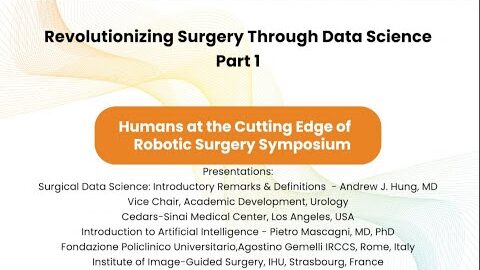#165 Robot Assisted Complex Prostatic Urethrocutaneous Fistula Excision Dr. Gautam Ram Choudhary
This is one of the 2023 KS International Innovation Awards videos selected for inclusion in the Vattikuti Foundation – ORSI Humans on the Cutting Edge of Robotic Surgery Conference, October 6, 7 & 8, 2023 in Ghent, Belgium. Posting does not imply that is has been selected as a Finalist, just that the content will be discussed at the Conference.
From the entry: Prostatic urethrocutaneous fistula excision by combined abdominoperineal approach
Abstract: Introduction Posterior urethrocutanoeus fistulas have been described in literature, however, the occurrence and surgical management of complex prostatic urethrocutaneous fistula haven’t been defined.
Case report
21-year-old male presented with complaints of dribbling of urine and occasionally semen, from the perianal wound after undergoing incision and drainage of perianal abscess 7months ago. There is past history of endourological procedure done for lower urinary tract symptoms in childhood. On examination, 5mm external opening was visible at 4 o’clock position in the perianal region & no abnormality was felt on digital rectal examination. MRI pelvis was done suggestive of an extra-sphincteric type of complex perianal fistula with internal communication with a 3.5×2.8cm cystic structure in place of prostate. On cystoscopy, a diverticulum like structure was seen arising from prostatic urethra at 3 o’clock position. Surgical Intervention Excision of such fistula without affecting functional outcome was a challenge, he was then planned for three-dimensional approach. In transperitoneal Robotic dissection, posterior approach was not enough to delineate the fistulous tract, anterior approach after incising endopelvic fascia and simultaneous cystoscopic manoeuvring was required to identify the fistulous tract. Instillation of methylene blue from perineal opening helped in complete excision of tract. Outcomes
Perioperative period remained uneventful, patient was discharged on day 3, per urethral catheter was removed at 3 weeks and he voided well. At 12 months follow up he is able to ejaculate and is sexually active.
Conclusion Surgery for a such entity has not been described yet, also, the tract was situated deep in the pelvis with complex anatomical relationship. With the help of Robotic system, precise dissection and reconstruction was possible without compromising functional outcomes.
See more at: https://vattikutifoundation.com/videos/
Date
August 15, 2020






